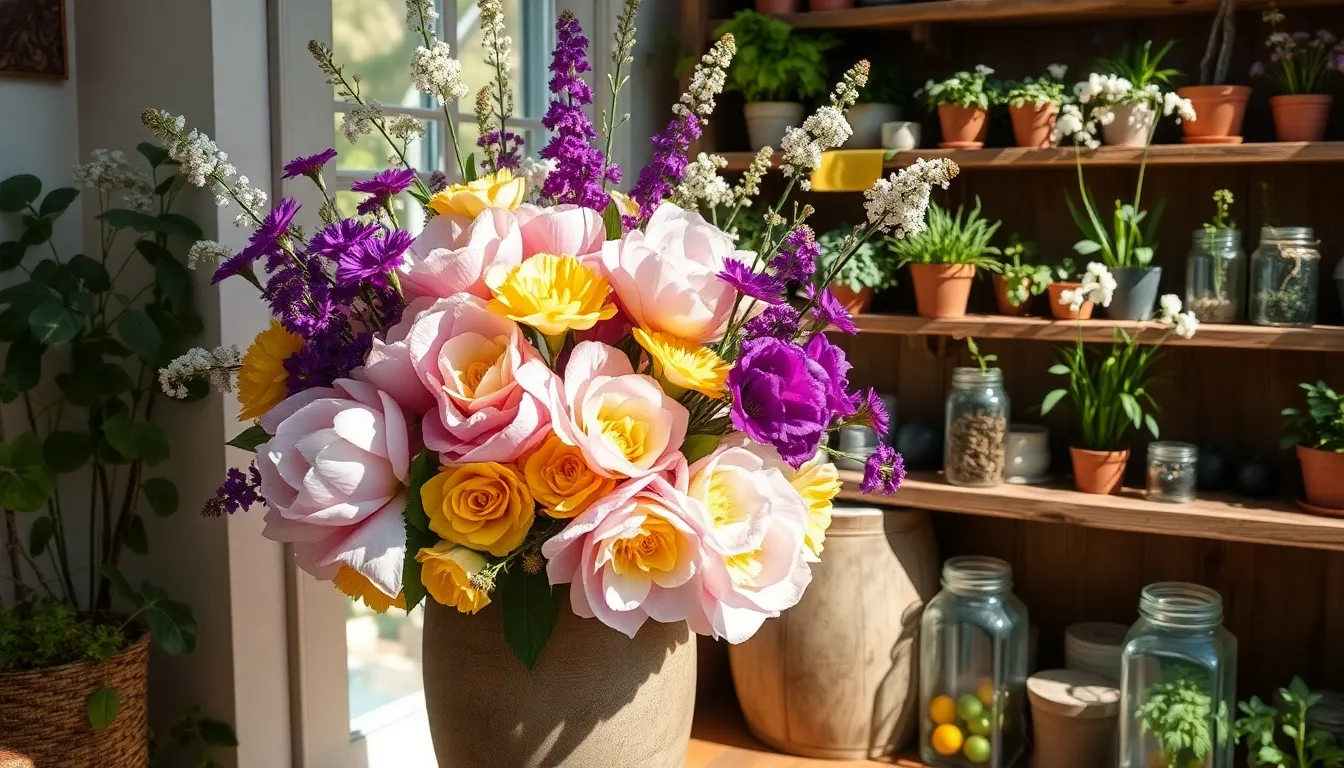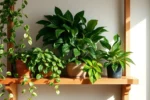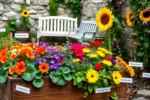There’s a unique magic in transforming your indoor space with the vibrant hues and natural elegance of flower arrangements. Whether you’re a seasoned gardener or someone just starting to explore the world of plants, crafting beautiful indoor floral displays can bring life and joy to your home while offering a creative outlet. Embracing this art form allows you to experiment with colors, textures, and scents, making each arrangement a reflection of your personal style and a celebration of nature’s beauty.
For the beginner, the thought of creating flower arrangements might seem daunting, but fear not—it’s an accessible craft that welcomes experimentation and growth. You’ll soon discover that with a few guiding principles, you can turn simple blooms into stunning compositions that light up any room. Experienced gardeners, on the other hand, will appreciate the opportunity to delve deeper into the nuances of design, perhaps experimenting with exotic varieties or challenging themselves with new techniques.
In this article, we’ll explore the essentials of selecting the right flowers and foliage, understanding color harmonies, and arranging them in a way that complements your indoor garden. You’ll learn practical tips for maintaining the freshness and longevity of your arrangements, ensuring they remain a vibrant centerpiece for days to come. By the end, you’ll be equipped with both the knowledge and inspiration to create stunning arrangements that not only enhance your indoor garden but also bring a sense of tranquility and delight to your everyday life.
Choosing Ideal Indoor Flowers
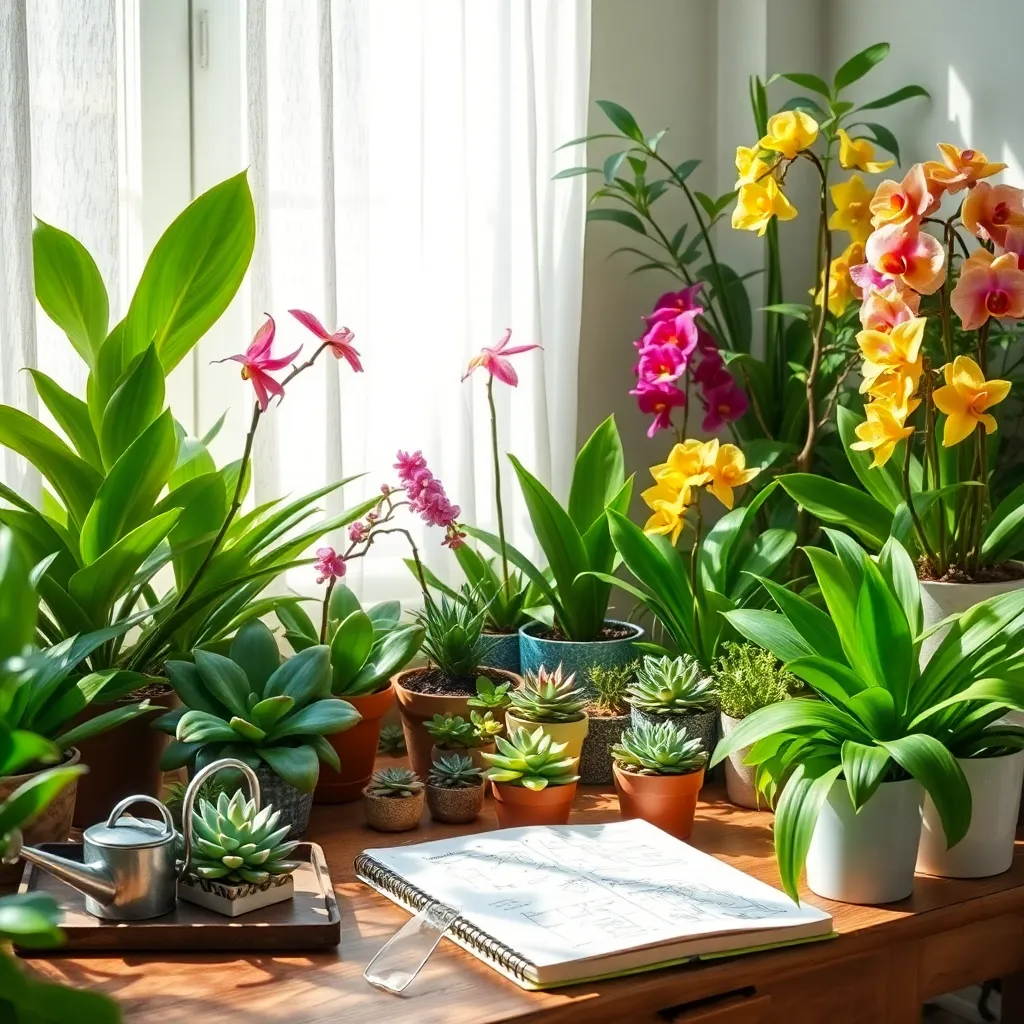
When choosing ideal indoor flowers, consider their light requirements to ensure they thrive. While some plants, like orchids, prefer bright indirect light, others such as peace lilies can flourish in lower light conditions.
It’s crucial to pay attention to the humidity levels in your home when selecting indoor flowers. Plants like ferns and bromeliads enjoy high humidity, so consider placing them in bathrooms or using a humidifier to keep them healthy.
Soil quality plays a significant role in the success of indoor flowers. Opt for a well-draining potting mix that suits the specific needs of your chosen plants; for instance, cacti require a sandy mix, while African violets thrive in a peat-based blend.
Watering frequency is another essential factor for indoor plant care. Most indoor flowers prefer their soil to dry out slightly between waterings, but always check the top inch of soil with your finger to gauge moisture levels before watering.
Designing Harmonious Color Schemes
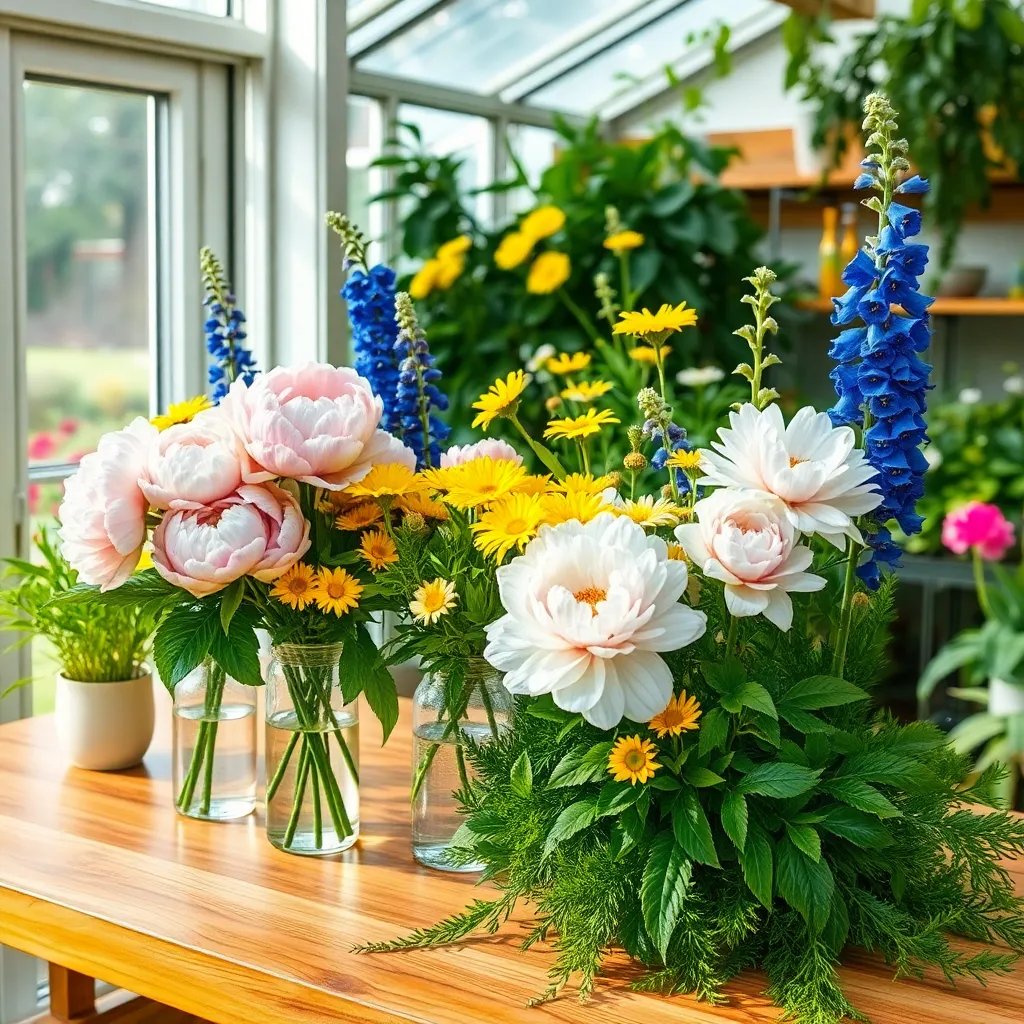
When designing harmonious color schemes for your indoor garden, consider using the color wheel as a guide. Complementary colors, such as purple and yellow, can create striking visual contrasts, while analogous colors offer a more subdued and cohesive look.
Begin by selecting a dominant color for your arrangement, which will set the tone for the rest of your design. This could be a vibrant red from a beautiful Anthurium or a calming blue from a Peace Lily.
After choosing your dominant color, incorporate one or two secondary shades to enhance the overall harmony. Consider using foliage plants like ferns or calatheas to introduce green tones, which can tie together more vibrant hues.
For beginners, a simple color scheme using white flowers, such as orchids, can bring elegance and peace to any space. More experienced gardeners might experiment with layering different shades of a single color for a sophisticated monochromatic effect.
To maintain the vibrancy of your indoor garden, ensure each plant receives the appropriate care based on its individual needs. Regularly check the soil moisture, as some plants, like African Violets, thrive in consistently moist soil, while others prefer it to dry out between waterings.
Lighting is crucial in maintaining the colors of your plants, so place them near windows where they can receive indirect sunlight. If natural light is scarce, consider using grow lights to supplement their needs, ensuring your color schemes remain vivid year-round.
Arranging for Optimal Growth
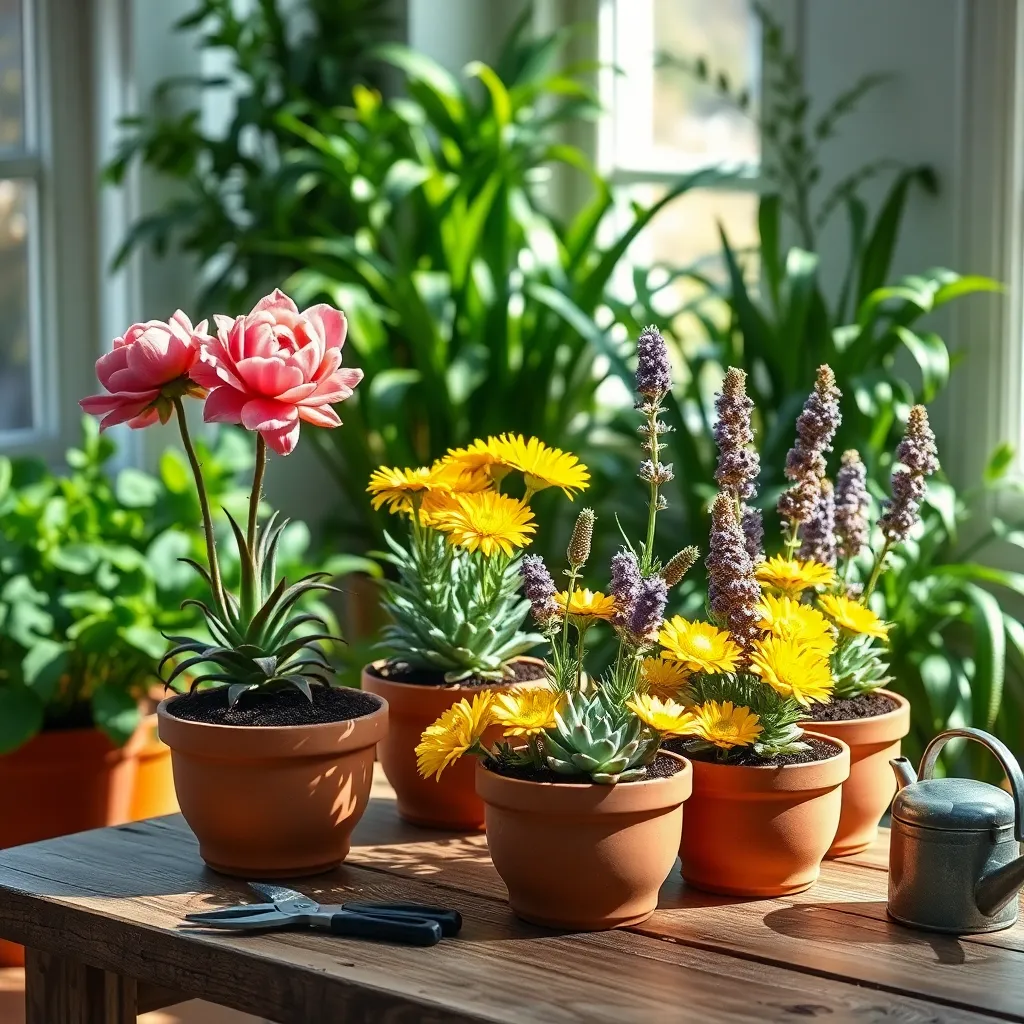
Arranging your indoor garden for optimal growth involves careful consideration of each plant’s light requirements. Position plants that thrive in bright, indirect light, such as peace lilies and ferns, near windows, while those that prefer low light, like snake plants and pothos, can be placed further inside the room.
It’s crucial to understand the watering needs of your plants to avoid over or under-watering. A general rule of thumb is to let the top inch of soil dry out before watering again, but always adjust based on the specific needs of each plant species.
Soil quality is another critical factor for healthy indoor plant growth. Using a well-draining potting mix is essential, and for plants like succulents or cacti, mix in sand or perlite to enhance drainage and prevent root rot.
For advanced gardeners, consider rotating your plants every few weeks to ensure even growth. This practice helps plants receive equal sunlight on all sides, preventing them from leaning towards the light source and promoting a more balanced shape.
Incorporating Unique Textures
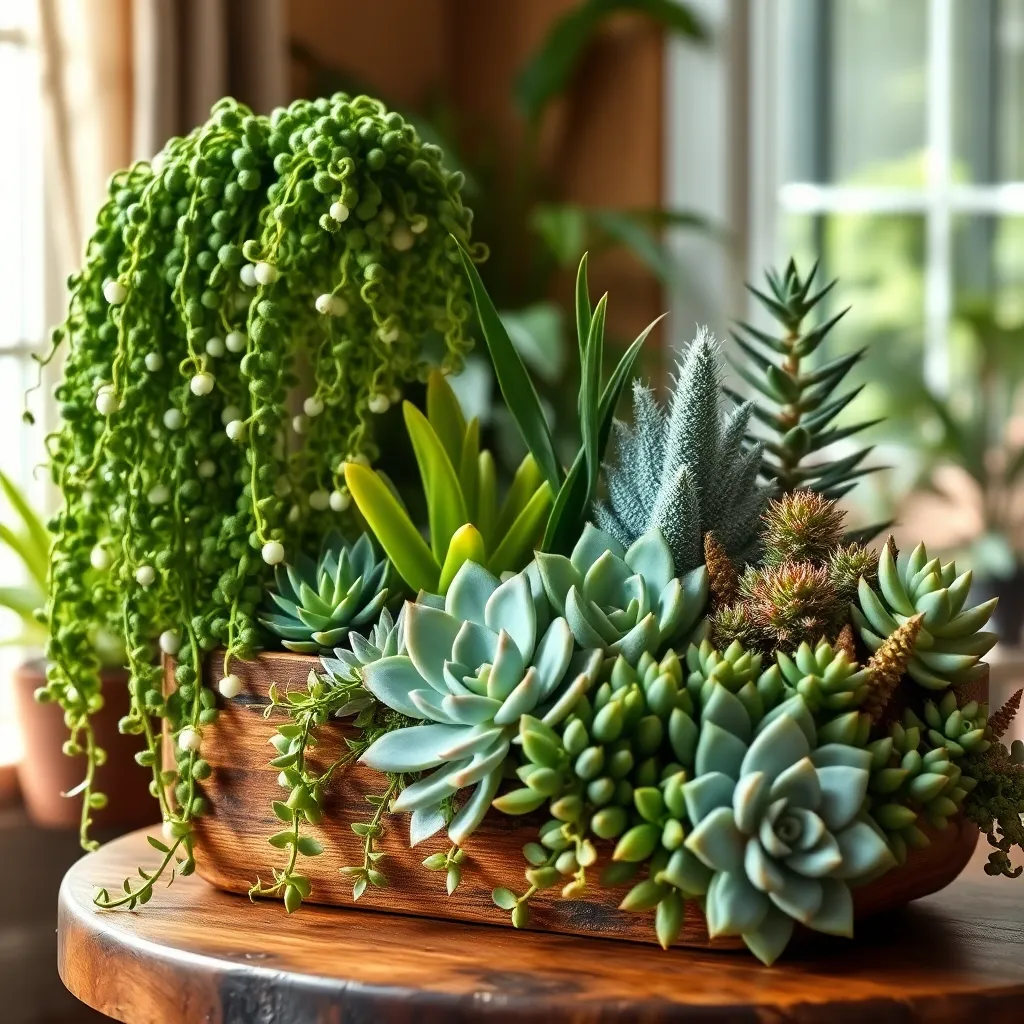
Incorporating unique textures in your indoor flower arrangements can bring a dynamic element to your garden space. Start by choosing plants with varied leaf shapes and surfaces—soft, fuzzy leaves of the African violet contrast well with the glossy, smooth texture of peace lilies.
Another way to add texture is by mixing plants with different growth habits. Consider pairing the upright form of dracaena with the cascading stems of string of pearls to create a visually captivating display. This diversity not only enhances aesthetics but can also improve air circulation around your plants, promoting healthier growth.
Experiment with different soil types to further enhance texture diversity. Cactus and succulent arrangements thrive in gritty, well-draining soil, while ferns prefer a more moisture-retentive mix like peat-based compost. Adjusting soil types to match plant needs ensures optimal growth and maintenance of unique textures in your arrangement.
For advanced gardeners, consider using structural elements like twigs or stones to add another layer of texture. These can be artfully arranged among the plants, providing both aesthetic and functional benefits, such as improved drainage. Remember to keep an eye on how these elements affect the overall balance of your arrangement, ensuring each plant continues to receive the light and space it needs.
Maintaining Long-Lasting Displays
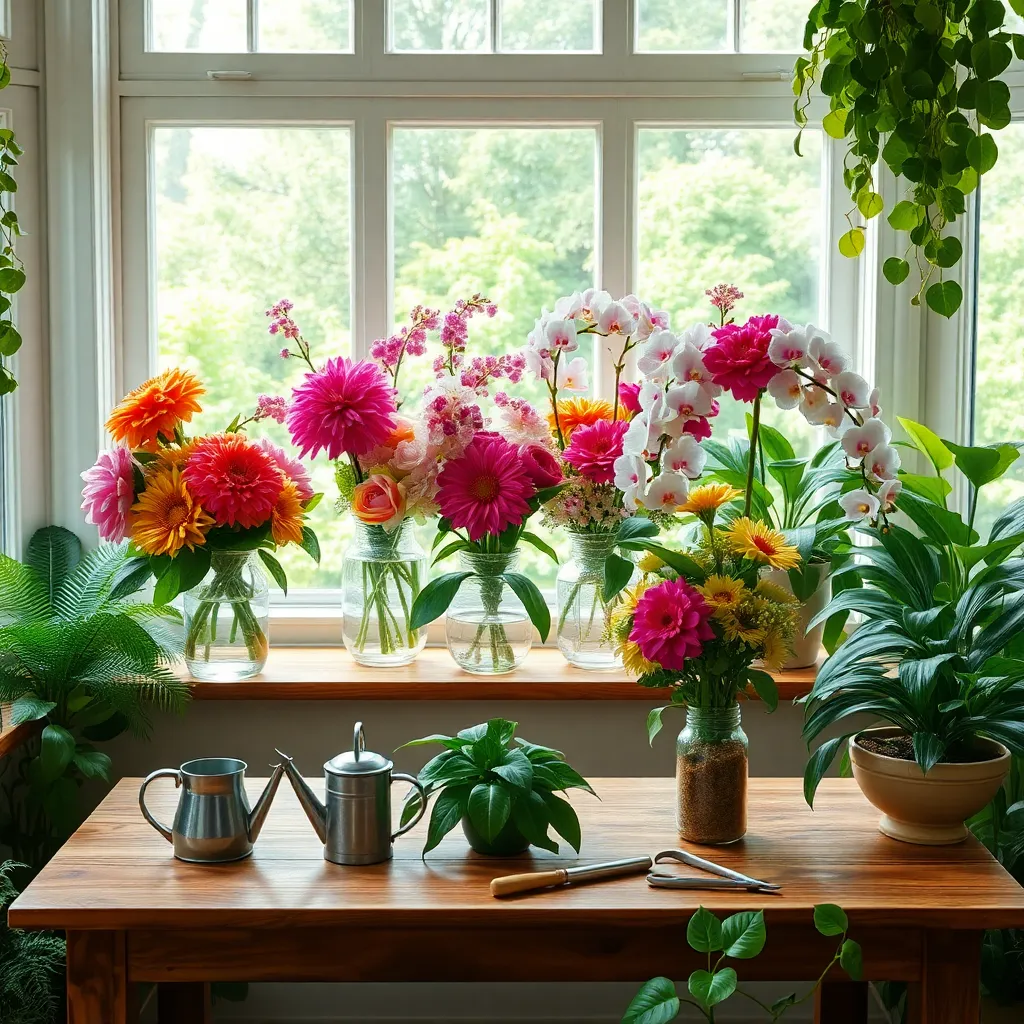
To maintain long-lasting floral displays indoors, begin by selecting flowers with varying lifespans. Pairing longer-lasting blooms like orchids or chrysanthemums with short-lived flowers such as tulips can ensure that your arrangement stays vibrant over time.
Watering your arrangements properly is crucial for longevity. Ensure the water in your vase is changed every two to three days to prevent bacteria buildup, which can shorten the life of your blooms.
Trim the stems at an angle each time you change the water to improve water uptake. This simple technique helps keep your flowers hydrated and looking fresh for longer periods.
Incorporating a floral preservative into the water can provide essential nutrients to your flowers. You can make a DIY solution by mixing a teaspoon of sugar, a teaspoon of vinegar, and a few drops of bleach into the water.
Place the arrangements in a location that receives indirect sunlight to prevent wilting. Direct sunlight can cause flowers to deteriorate quickly, while a cooler environment helps them last longer.
For more advanced care, consider misting your arrangements lightly to mimic natural humidity. This technique is particularly beneficial for tropical flowers like anthuriums, which thrive in humid conditions.
Conclusion: Growing Success with These Plants
In exploring the art of flower arrangements for indoor gardens, we’ve delved into five key relationship concepts that elevate both our personal and shared spaces: the importance of nurturing growth, the beauty of diversity, the balance of giving and receiving, the need for regular maintenance, and the power of creativity in expressing love. These principles are not only vital for cultivating thriving indoor gardens but also serve as foundational elements in fostering healthy, vibrant relationships.
As an immediate step, consider selecting a small floral arrangement to create together with your partner or loved ones. This simple act can serve as a metaphorical and literal representation of the care and attention you invest in your relationships.
I encourage you to save or bookmark this article as a useful reference for when you seek inspiration or guidance in both your gardening and relational endeavors. Embrace the journey of nurturing your relationships, knowing that with dedication and creativity, success is within reach. Remember, just like a well-tended garden, relationships blossom beautifully when they are thoughtfully cared for and cherished. Let’s commit to cultivating connections that flourish over time, enriching our lives and those of the people we hold dear.

